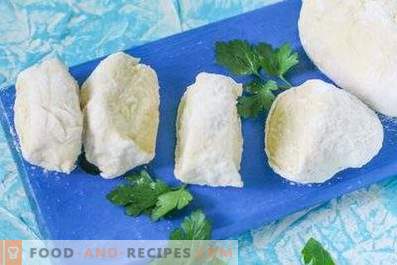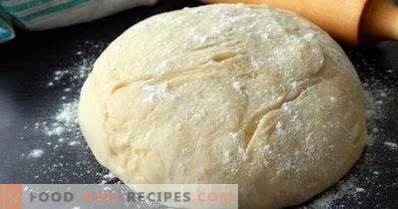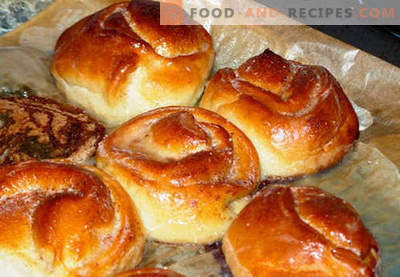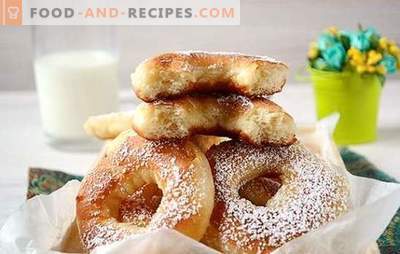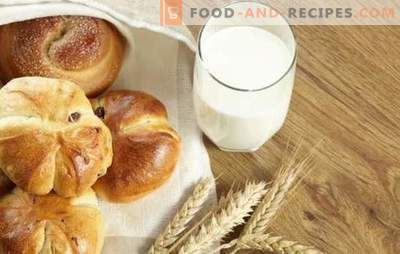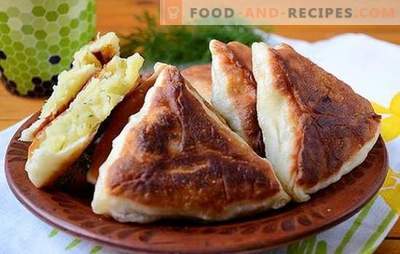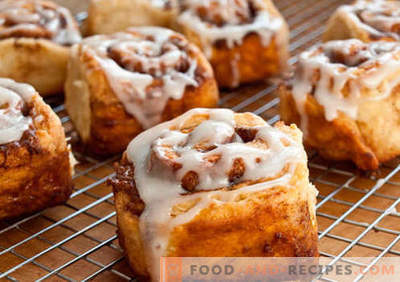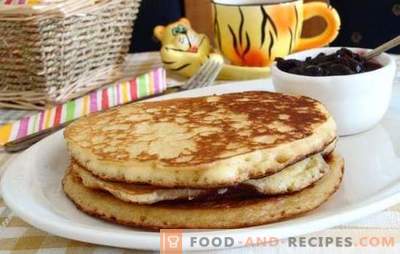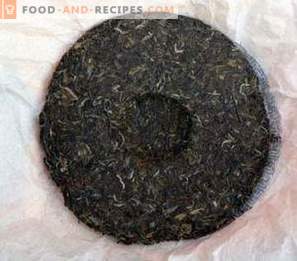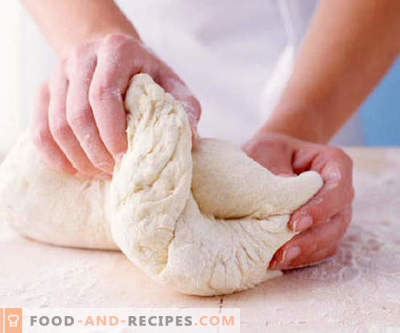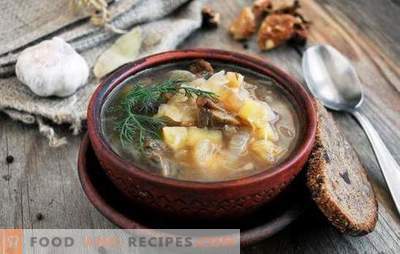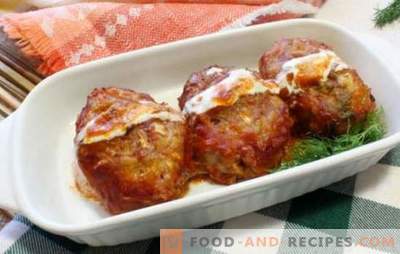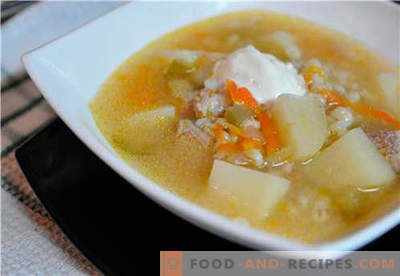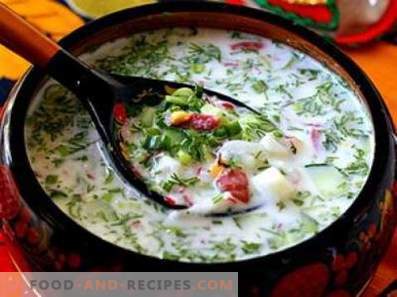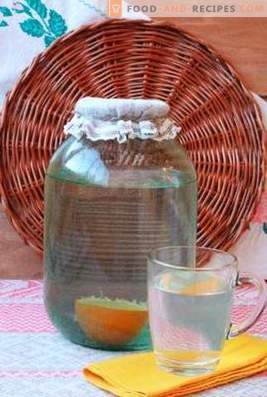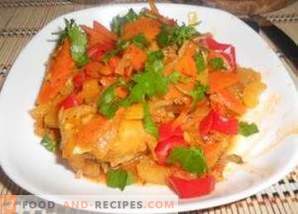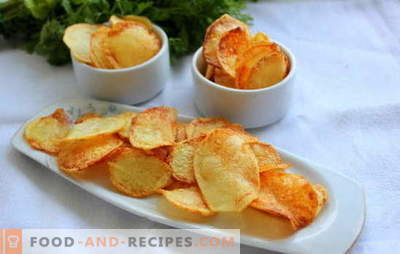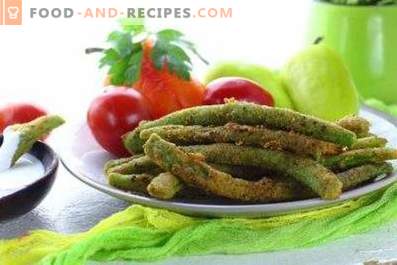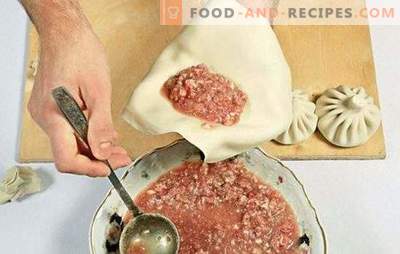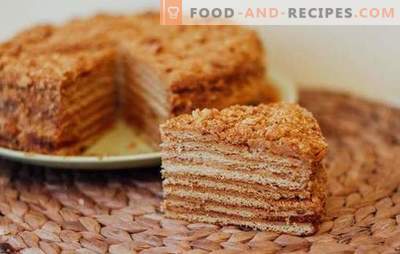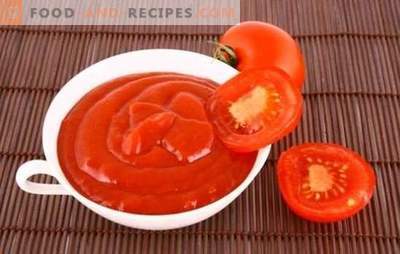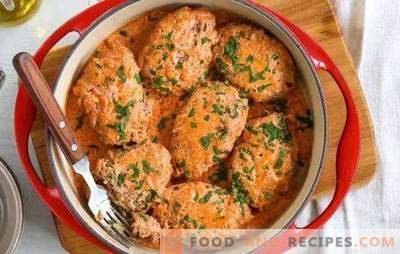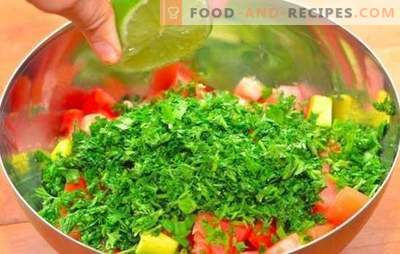
It seems to many housewives that the yeast dough is difficult to prepare, they prefer to buy ready-to-cook or ready-made products.
In fact, it is easy to cook, if you skillfully use the yeast and follow certain rules. Yeast is a yeast, that is, microorganisms that begin to grow under optimal conditions. And you need very little for this - a warm environment, milk or water, oxygen and food in the form of sugar and flour. Entering into the reaction, the ingredients form alcohol, carbon dioxide and acid.
The typical sour smell gives alcohol, raises the dough to carbon dioxide and carbon dioxide. The simplest dough prepared for bread is flour, yeast, salt and liquid. Tastes make it a baking, it can be butter, eggs, sugar, sour cream or cream.
With a different ratio of components cook steep, soft, sponge or batter. Flour before use should sift to saturate it with oxygen. Baking from soft or sponge dough is not stored for more than a few days. From the stiff dough, you can bake, for example, gingerbread, gingerbread - they can be stored for more than two weeks.
Yeast dough - what is prepared from it
It is rather difficult to list all the products from the test - each country in the world has its own traditions, recipes and preferences. Bread is baked from the simplest bread dough. Today, we can find dozens of types of bread on store shelves - almost all options can be baked at home. Sweet yeast dough is used for making confectionery and bakery products (buns, cheesecakes, muffins, buns, pies, muffins, and much more). Straight and sponge way you can get the dough with a different amount of baking. If you are planning a lot of baking, it is better to prepare the dough in a sponge manner in several stages. With the help of liquid yeast dough, real Russian pancakes are baked.
Recipe 1: Yeast dough in a sponge method
This dough is prepared when you want to bake sweet cakes or buns. There are many kinds of it, but the principle of preparation is one. First make a brew, then knead the dough on it. As a muffin choose butter, eggs, sugar. Dissolve the yeast with a little warm (not hot!) Milk. Ingredients:
Opara: flour (1 cup), milk or water (0.7 cup), sugar (1 tbsp. Spoon), yeast (20 grams).
Dough: eggs (4 pcs.), Flour (2 cups), milk (0.5 cups), salt (at the tip of a knife), vegetable oil (50 grams), sugar (100 grams) butter or margarine (70 grams).
Method of preparation
In the process of dissolving the yeast should make the dough, like on pancakes. To do this, dissolve the yeast with a spoon of sugar in milk and introduce the flour gradually, preferably sifting it through a sieve (approximately 1 cup). Opara is placed in a warm place for about an hour and a half. Having reached the maximum rise, it will begin to settle, wrinkles appear on the surface. Making muffins: rub eggs in a separate bowl with sugar and salt, mix well. Melt butter or margarine, cool to room temperature, add baking to the finished brew. Gradually introduce the remaining flour. Well mix the brew and baking. At the very end, pour in the cooled vegetable oil, knead the dough until it stops sticking to the hands and walls of the dish.
The main point in the preparation of yeast sponge dough is kneading. Hands knead about 20 minutes. Cover it with a napkin and put in a warm place, press down 2 times. The finished dough should be elastic and pleasant to the touch. If you press on it - a fossa is formed, which slowly levels out.
Recipe 2: Yeast Pastry in the Straight Way
This dough will require a small amount of baking, flour and yeast. Most often it is used to make pies and pies with a lot of toppings.
Ingredients: wheat flour (700 grams, approximately 4 cups), sugar (2 tablespoons), vegetable oil or margarine (4 tablespoons, or 60 grams), egg (1 pc.), Fresh yeast ( or dry, 20 grams), milk (1 cup), salt (half a teaspoon).
Method of preparation
Dissolve the yeast with warm milk or water (approximately 30 degrees), add salt, add sugar, mix well to dissolve. Add eggs and add flour. Knead the dough, at the end add the softened margarine or butter. Knead the dough in the same way as the sponge boil - for a long time, until it lags behind the hands and dishes. Cover with a clean cloth and set for 3-4 hours to ferment. We crush 2-3 times as soon as it doubles in volume. The first fade will be about an hour and a half, then again after the same time.
Recipe 2: Yeast dough for traditional Russian pancakes
Russian pancakes are different from the early maturing in that they are prepared with yeast dough. They turn out magnificent, soft, easy, completely covered with an openwork pattern with small holes. Such pancakes perfectly absorb sour cream and butter, they become shiny and outrageously appetizing! In Russia, baked pancakes from different flours - oatmeal, wheat, buckwheat. On Shrovetide they tried to outdo their neighbors, trying to impress them with hot spots and fillings. Yeast dough for pancakes is quite possible to learn how to do it yourself. The truth will take time to ferment - but the real housewives spend it on cooking with great pleasure, because the reward is a huge mountain of pancakes, which feed the whole family and treat guests.
Ingredients: milk (half a liter), yeast (1 bag of dry or 25 grams of fresh), sugar (2-3 tsp, flour (two and a half cups), boiling water (half a glass), eggs ( 2 pieces), butter (100 grams).
Method of preparation
For the dough, choose a large enough pan, as the volume will increase. We add yeast, salt, sugar, we part them, constantly we pour a little flour. Stir the dough so that the flour buns dissolve, cover the pan with a napkin and place in a warm place so that it will fit for an hour. Constantly stir and pour boiling water, eggs and butter. Get a gentle dough that you want to use without residue, otherwise it can perekisnut. Bake pancakes should be in a thick pan, the best cast iron.
Recipe 3: Yeast dough on kefir and vegetable oil
Such a dough is an excellent option for pies and pies with a filling. We use fast-acting yeast and the straightforward method of making dough.
Ingredients: wheat flour (600 grams), yeast (15 grams, or a tablespoon), sugar (2 tablespoons), salt (1 teaspoon), kefir (400 ml), vegetable oil (10 grams ).
Method of preparation
Mix sifted flour, salt, yeast, sugar. Kefir and vegetable oil mixed in a separate bowl. Pour the liquid into the flour gradually, knead the elastic dough, transfer it to the bowl and cover with a towel. This is an early maturing dough, it will be suitable for about an hour. We sit down several times with our hands. It is advisable to use it immediately. If, however, a part of the dough remains, it is better to freeze it, otherwise it will ferment and lose its properties. In the bread maker, such a dough is prepared on the dumplings mode. Mix all the ingredients and leave in a closed bread maker for 1 hour after the program.
Yeast dough - useful tips from experienced chefs
If the dough does not ferment?
What to do when the dough does not rise? This can occur for various reasons, first of all - in case of non-compliance with the temperature regime. The optimal fermentation temperature is 30 degrees. If the dough is overheated, it should be cooled, too cold dough to warm up and add fresh yeast, but so that it does not come into contact with objects having a temperature above 50 degrees.
Fermentation slows down or stops if too much salt and sugar is put. You can knead the new dough with another batch of yeast, and mix with salted or oversaturated. Yeast quality plays a big role. To check the yeast, you can prepare a small portion of the dough, sprinkle with flour and watch as it is understood. If cracks do not appear after a few minutes, the yeast is of poor quality.
You also need to take into account the number of ingredients:
- with an excess of water, the dough is poorly formed, the pastry is flat and blurry;
- with a lack of water, pastries are hard, the dough does not ferment well;
- excess salt - a pale crust, an increase in the fermentation time;
- lack of salt - vague and tasteless products;
- glut of sugar - the surface roasts quickly, and the middle is not baked, the dough slowly and badly ferments, if sugar is added - fermentation stops altogether;
- with a lack of sugar baking has a pale appearance;
- too much yeast - unpleasant alcoholic taste of products.
